As the Corniche roads from Nice descend towards Menton, it approaches the Mediterranean resort of Roquebrune-Cap-Martin.
The perched village of Roquebrune overlooks the luxuriant vegetation of the Cap Martin peninsula.
From the medieval castle, breathtaking views command the coastline of the French Riviera, from the mountains above Menton and Italy to the dazzling Principality of Monaco.
Watch our short video on the French Riviera, an aerial journey from Toulon to Menton via Saint-Tropez, Cannes, Nice and Monaco ⤵
Plan your trip to Roquebrune-Cap-Martin + region!
- 🏨 Find the best accommodations in the region of Menton on Booking.com
- 🙋♀️ Get the PASS CÔTE D’AZUR and take your pick from more than 100 amazing experiences!
- 🌴 Visit the parks and gardens of Menton
- 🎯 Take a guided hidden gem tour of Monaco
- 🥗 Experience the culture and food of Old Nice on a 4-hour sightseeing and tasting tour
- 📚 Read the DK Eyewitness Provence and the Côte d’Azur Travel Guide
- 🤩 Get familiar with the French Riviera
![Rocquebrune-Cap-Martin © XtoF - licence [CC BY-SA 4.0] from Wikimedia Commons](https://frenchmoments.eu/wp-content/uploads/2014/08/Rocquebrune-Cap-Martin-©-XtoF-licence-CC-BY-SA-4.0-from-Wikimedia-Commons.jpg)
Situation of Roquebrune-Cap-Martin
Situated in an enviable position 2 km from Monaco and Menton, Roquebrune-Cap-Martin is a commune of the Alpes Maritimes département.
Roquebrune-Cap-Martin (often abbreviated as RCM) is made up of two main districts:
- the historic perched village and
- the more modern town (including the Cap Martin peninsula).
Numerous residences lie between the hilltop village and the town along departmental roads 6007 and the Nice-Menton railway line.
Roquebrune is crossed by the three corniche roads of the Riviera and the A8 motorway.
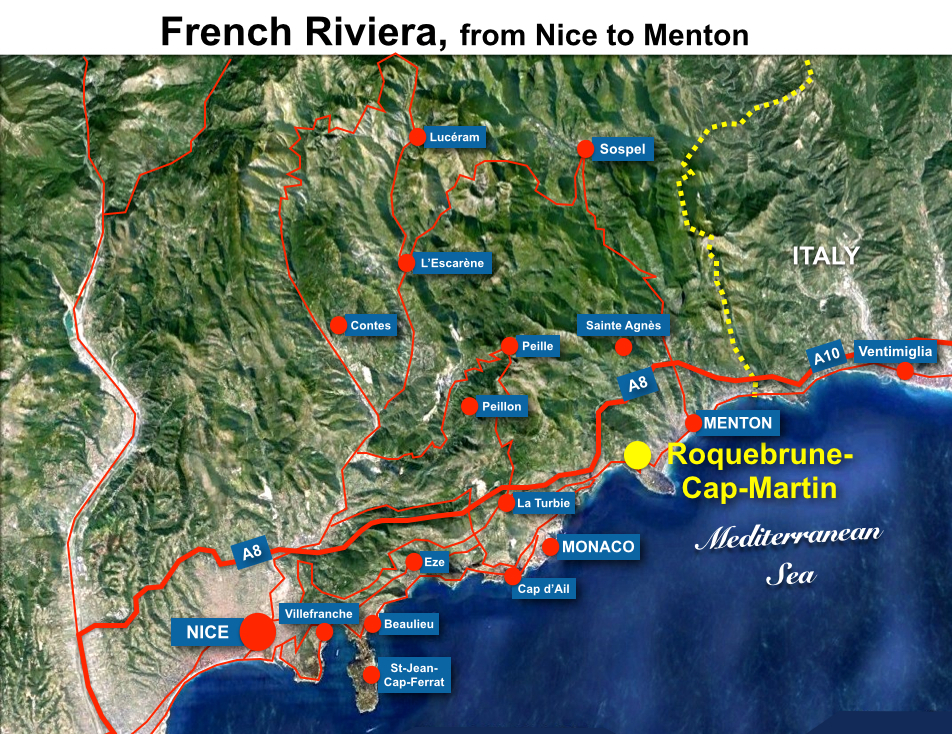
The population of Roquebrune-Cap-Martin is about 12,450 (Roquebrunois and Roquebrunoises).
Famous people of Roquebrune
There are several personalities linked to Roquebrune:
- Empress Elisabeth of Austria (1837-1898), aka Sissi, stayed in Cap Martin from 1896 to 1897.
- Grand Duke Alexander Mikhailovich of Russia lived in Roquebrune and died in his villa in 1933.
- Singer Jacques Brel owned a little house in Cabbé from 1960 to 1970.
- Famous architect Le Corbusier (1887-1965) died in Roquebrune and is buried in the village’s cemetery.
- Fashion designer Gabrielle “Coco” Chanel had a villa designed and built in the 1930s: Villa La Pausa. The villa remained her property until 1953 when she sold it to the Hungarian publisher Emery Reves.
- From 1956 to 1958, Winston Churchill spent roughly a third of each year in Roquebrune-Cap-Martin at La Pausa. There, the former British Prime Minister wrote and edited part of his History of the English-speaking Peoples.
![Roquebrune Cap Martin Square Sissi © Sergemc - licence [CC BY 3.0] from Wikimedia Commons](https://frenchmoments.eu/wp-content/uploads/2014/08/Roquebrune-Cap-Martin-Square-Sissi-©-Sergemc-licence-CC-BY-3.0-from-Wikimedia-Commons.jpg)
Why Roquebrune?
Roquebrune means “Roche Brune” or “Brown Rock,” in reference to the brown colour of the rocks in the old perched village.
Formerly called “Roquebrune,” the town changed its name to “Roquebrune-Cap-Martin” to avoid confusion with Roquebrune-sur-Argens in the Var département.
![Roquebrune Cap Martin © Florian Pépellin - licence [CC BY-SA 2.5] from Wikimedia Commons](https://frenchmoments.eu/wp-content/uploads/2014/08/Roquebrune-Cap-Martin-©-Florian-Pépellin-licence-CC-BY-SA-2.5-from-Wikimedia-Commons.jpg)
Roquebrune-Cap-Martin: A Bit of History
![Roquebrune from D6098 © Guy Lebègue - licence [CC BY-SA 3.0] from Wikimedia Commons](https://frenchmoments.eu/wp-content/uploads/2014/08/Roquebrune-from-D6098-©-Guy-Lebègue-licence-CC-BY-SA-3.0-from-Wikimedia-Commons.jpg)
The Roman times
During Roman times, the site of Roquebrune was crossed by the Via Julia Augusta, which ran from Pisa, Italy, to Arelates (Arles, France) through Ventimiglia and La Turbie.
A monument (Trophy of Augustus) was built there to celebrate Emperor Augustus’ victory over the Ligurian tribes.
Roquebrune and Menton’s positions between the Republic of Genoa and the County of Provence were highly coveted during the Middle Ages.
The lords of Ventimiglia ruled Roquebrune in the 13th century.
The Grimaldi era and the French annexation
Charles Grimaldi of Monaco acquired the town in 1346, and it remained in their possession for the next five centuries until 1848.
That year, Roquebrune and the neighbouring town of Menton seceded from Monaco in response to litigation involving taxes on lemon exports.
The two towns self-proclaimed a ‘Free City’ and placed themselves under the protection of the King of Sardinia.
Consequently, the House of Savoy ruled Roquebrune until 1861, when the town voted massively for its annexation to France by referendum.
Nice and its county had taken a similar decision a year before and Roquebrune was added to the département of Alpes-Maritimes.
Then, in February 1861, Napoleon III paid the prince of Monaco 4 million francs to compensate for the renouncement of the lord’s rights in perpetuity.

Interestingly, Roquebrune had become French for a limited time during the French Revolution and the First Empire and was included in the newly created Alpes Maritimes département.
The town was part of the Sanremo arrondissement in present-day Italy for a few years.
A trendy resort on the French Riviera
In the second half of the 19th century, Roquebrune underwent a deep change following the publication of James Henry Bennett’s treatise Winter and Spring on the Shores of the Mediterranean (1861).
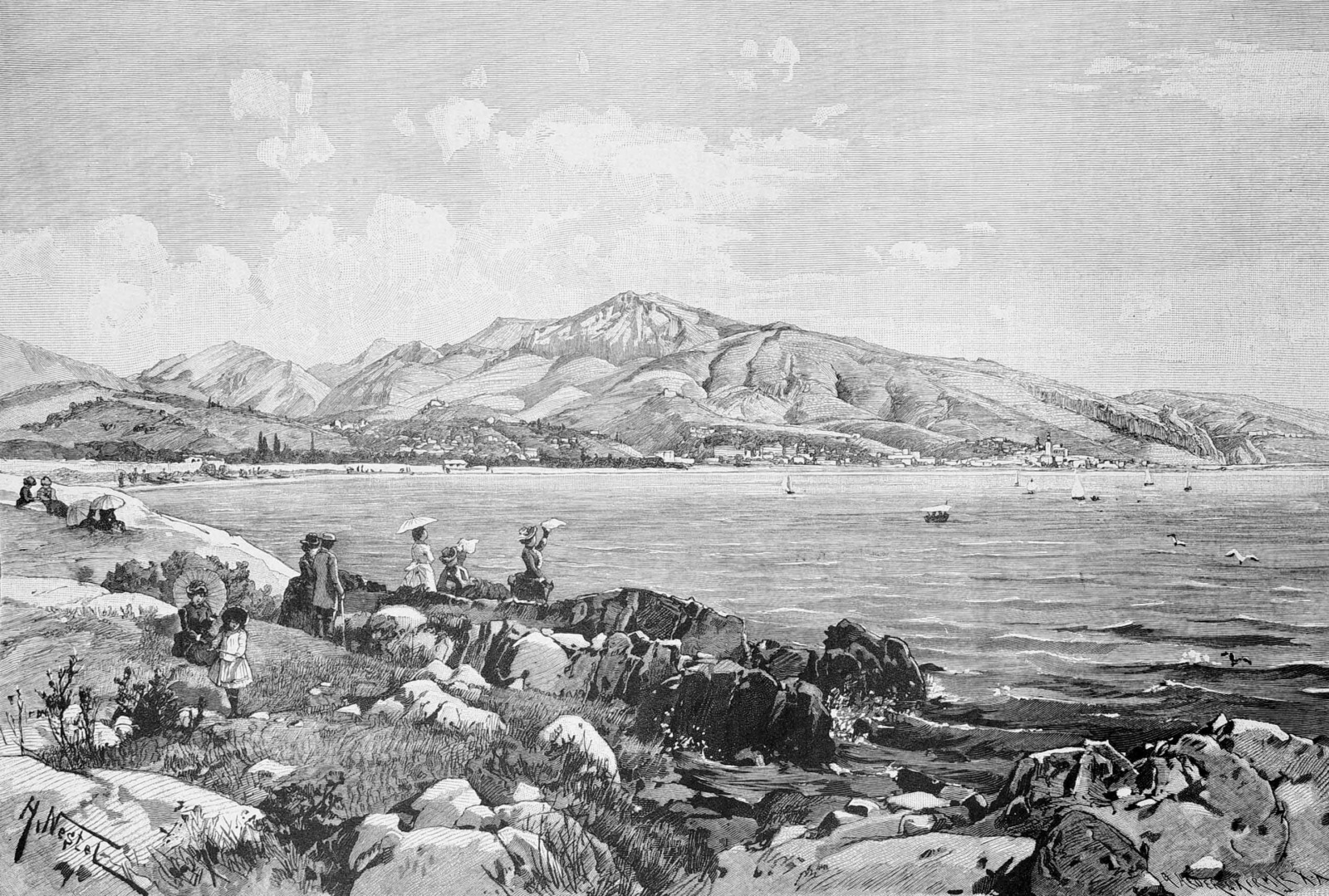
His writings praised the mild climate of Menton to tuberculosis sufferers.
In fact, the doctor contributed to popularising Menton and neighbouring Roquebrune as upper-class winter holiday destinations.
Aristocrats from European countries built many opulent villas on the Cap Martin peninsula.
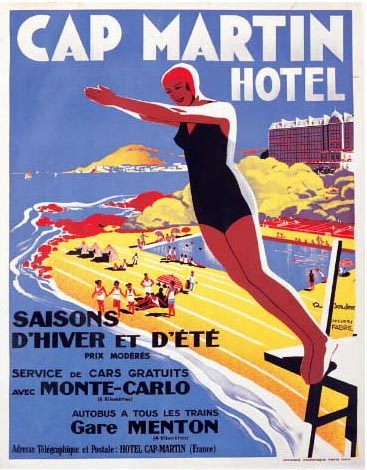
The perched village of Roquebrune
The hilltop village and Cap Martin are the two main attractions of Roquebrune.
The picturesque hilltop village
![Rue de la fontaine © Unknown author - licence [CC BY-SA 3.0] from Wikimedia Commons](https://frenchmoments.eu/wp-content/uploads/2014/08/Roquebrune-Rue-de-la-fontaine-©-Unknown-author-licence-CC-BY-SA-3.0-from-Wikimedia-Commons.jpg)
Perched 300 metres above sea level above the peninsula of Cap Martin, Roquebrune is an old village overlooking the French Riviera’s coastline.
It is a typical Provençal hilltop village with narrow streets, arched passages, intimate shady little squares, and ancient fountains.
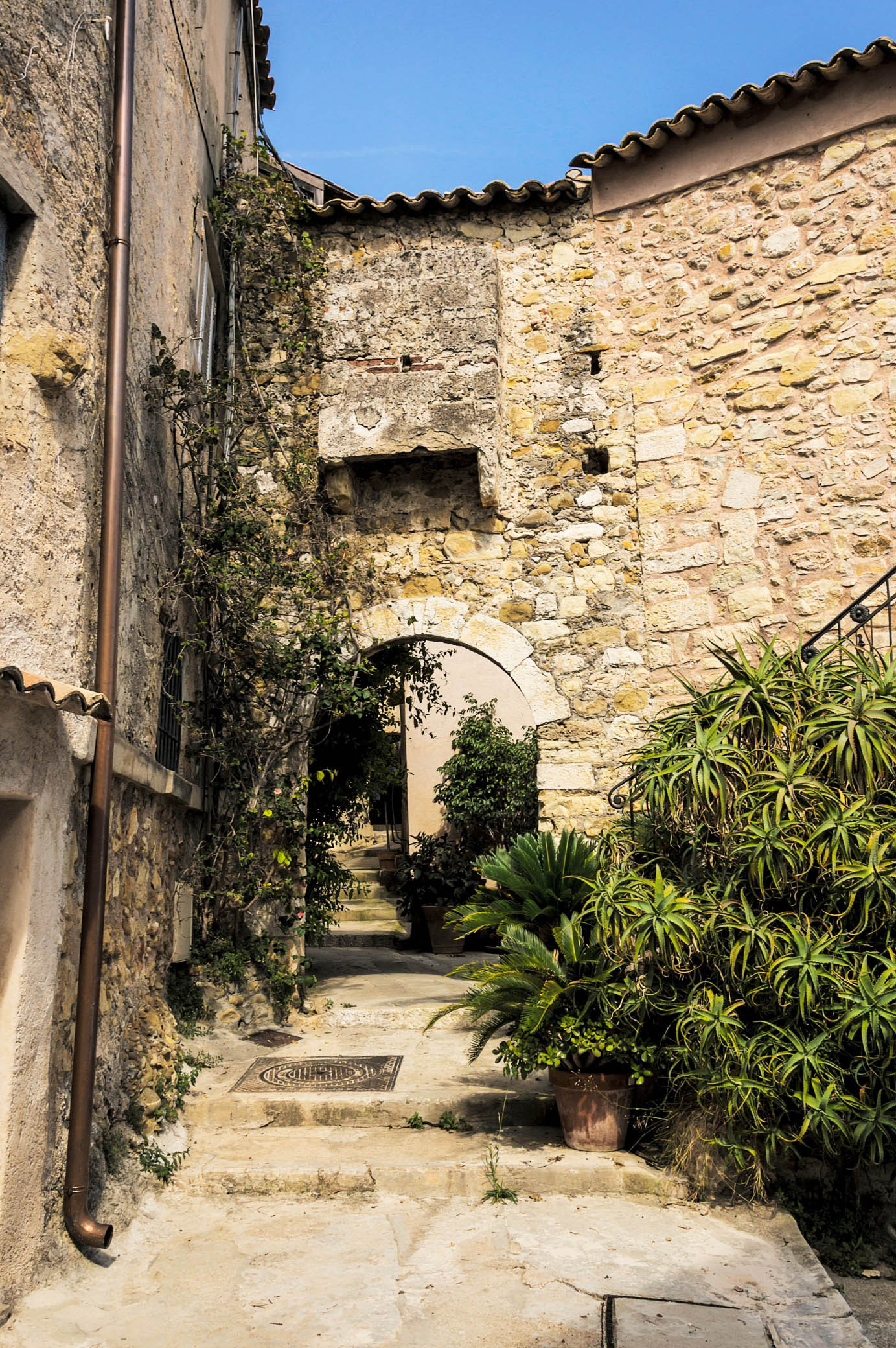
The narrow streets of the village
The Place des Deux Frères marks the entrance to the medieval village with a great view of the castle.
You can get an idea of the picturesque site by walking the streets of Rue Grimaldi, Rue Moncollet, Rue de la Fontaine, and Rue du Château.
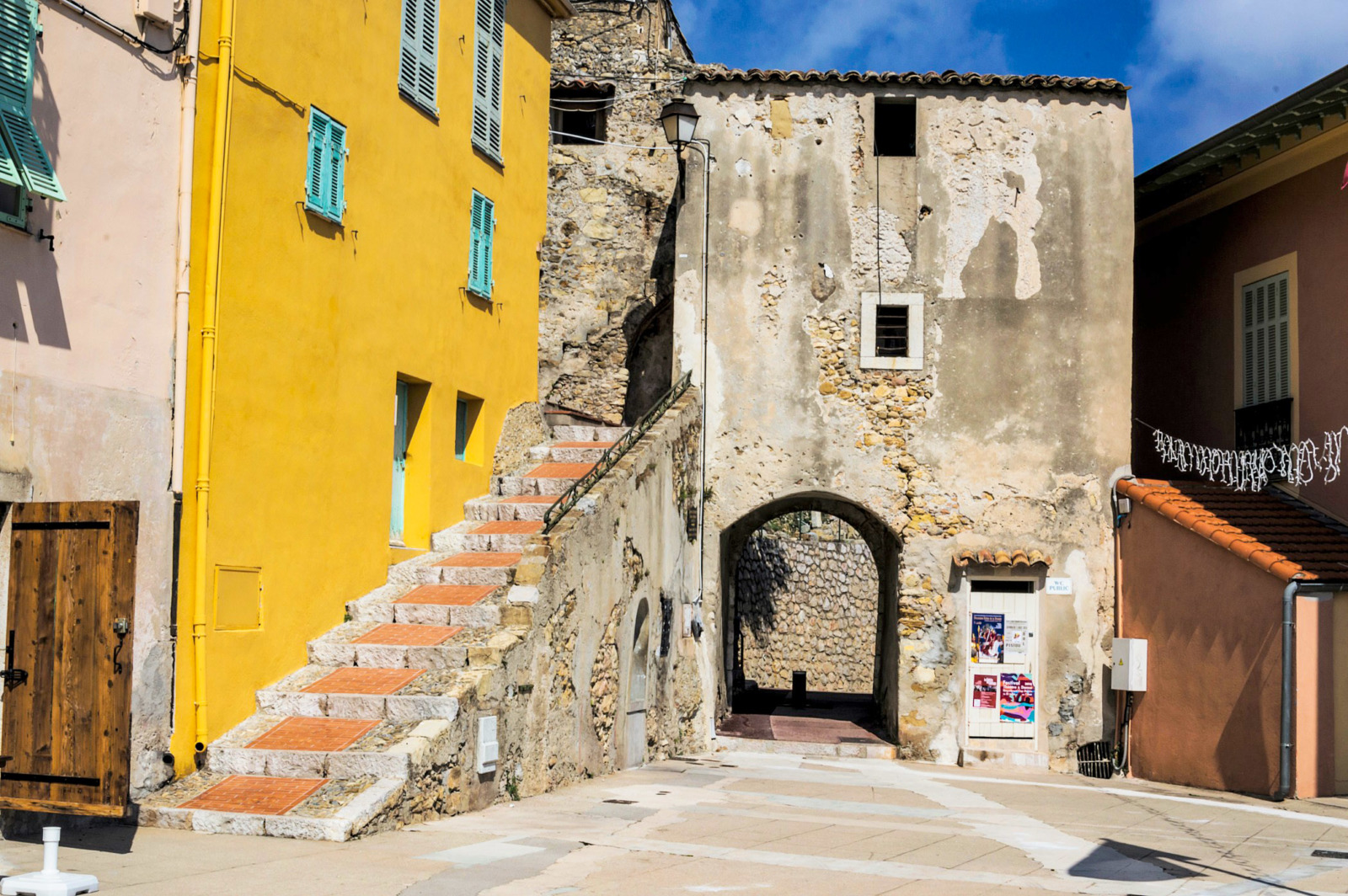
These narrow streets, full of character, have the typical aspects of a medieval village.
They are often covered, steeply sloping or stepped. Some are lined with local shops, especially art galleries, craft workshops and souvenir shops.
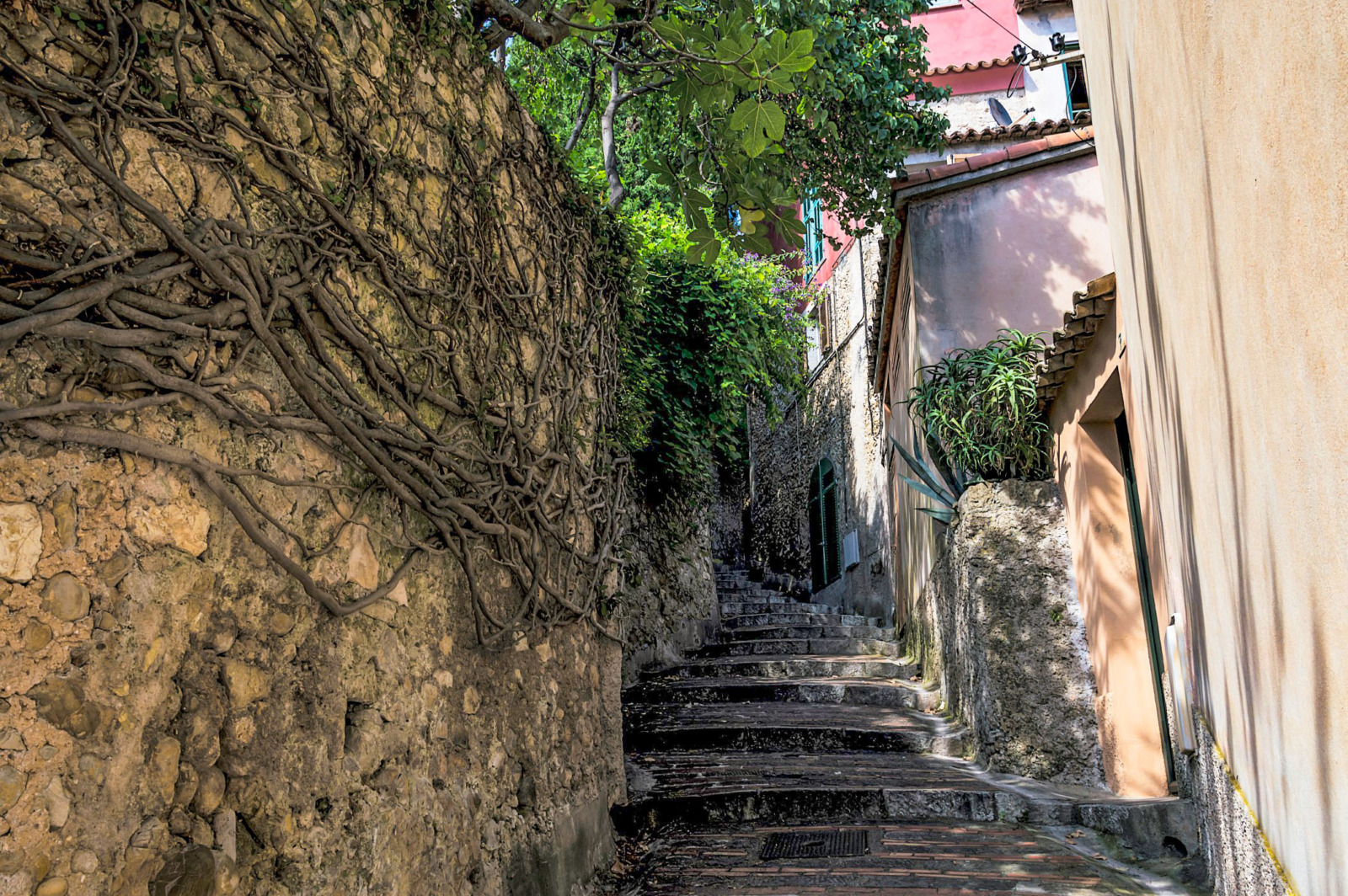
For example, the Rue Moncollet is very curious and picturesque with its long, narrow, vaulted passages cut by stairs.
The street is cut into the rock, and the medieval houses along it have barred windows.
They were the residences of the guests of the lordly court.
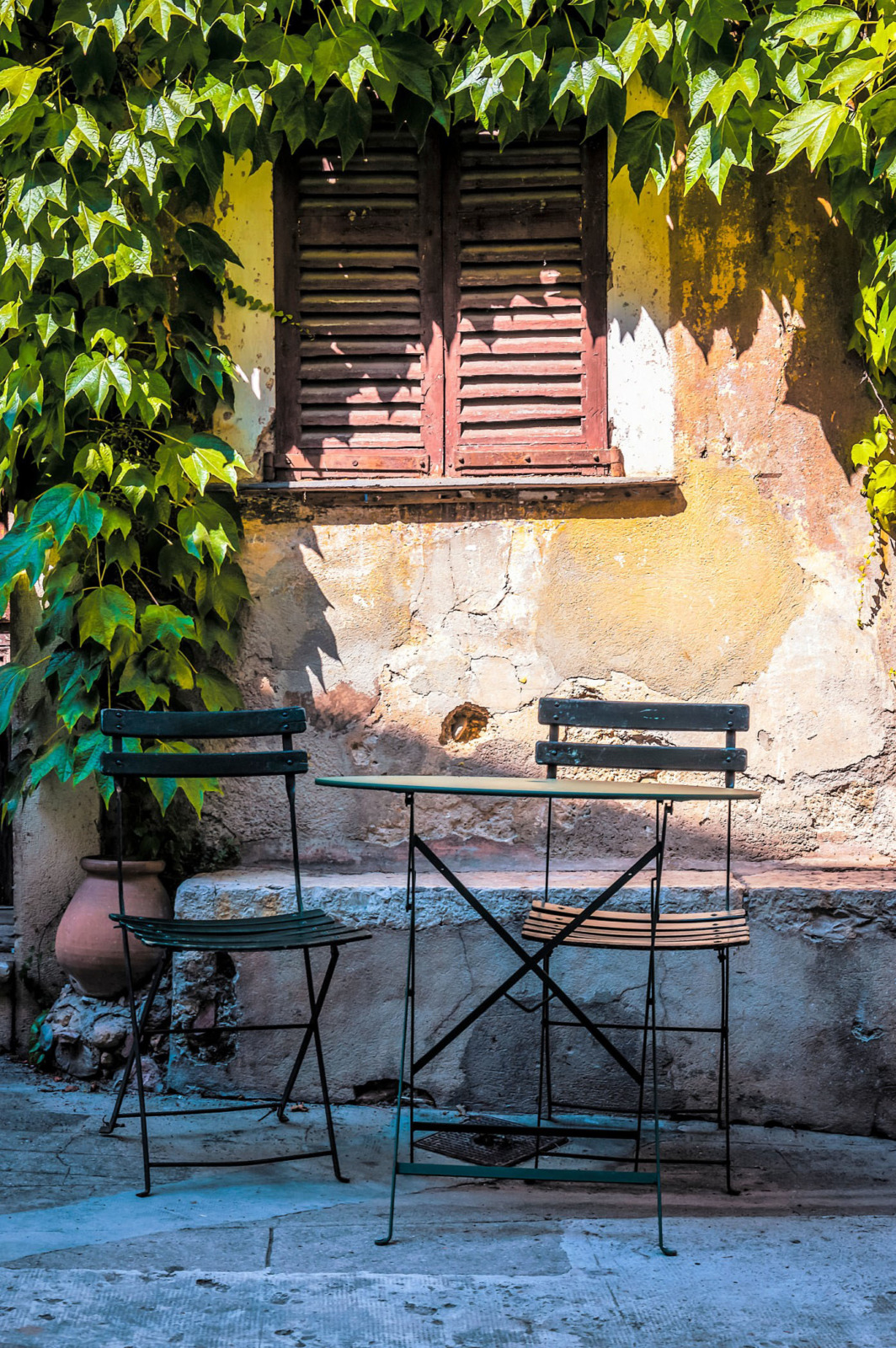
![Roquebrune old street © Guerinf - licence [CC BY-SA 4.0] from Wikimedia Commons](https://frenchmoments.eu/wp-content/uploads/2014/08/Roquebrune-old-street-©-Guerinf-licence-CC-BY-SA-4.0-from-Wikimedia-Commons.jpg)
![Roquebrune old street © Guerinf - licence [CC BY-SA 4.0] from Wikimedia Commons](https://frenchmoments.eu/wp-content/uploads/2014/08/Roquebrune-old-street-2-©-Guerinf-licence-CC-BY-SA-4.0-from-Wikimedia-Commons.jpg)
![Place William Ingram © Elena Tartaglione - licence [CC BY-SA 4.0] from Wikimedia Commons](https://frenchmoments.eu/wp-content/uploads/2014/08/Roquebrune-Cap-Martin-Entrance-of-castle-©-Elena-Tartaglione-licence-CC-BY-SA-4.0-from-Wikimedia-Commons.jpg)
The Grimaldi castle
The first mention of the Grimaldi castle dates from 1157.
![Roquebrune-Cap-Martin - Place des Deux Frères and Castle © Unknown Author - licence [CC BY-SA 3.0] from Wikimedia Commons](https://frenchmoments.eu/wp-content/uploads/2014/08/Roquebrune-Place-des-Deux-Frères-and-Castle-©-Unknown-Author-licence-CC-BY-SA-3.0-from-Wikimedia-Commons.jpg)
However, Conrad I, Count of Ventimiglia, is said to have built the medieval fortress at the end of the 10th century to prevent the Saracens from re-establishing themselves in the region.
Thus, the keep is believed to be the oldest in France… or at least one of the oldest!
The current castle only retains a few elements from the 13th century when it was only a tower.
![The Grimaldi Castle in Roquebrune-Cap-Martin © Leon petrosyan - licence [CC BY-SA 4.0] from Wikimedia Commons](https://frenchmoments.eu/wp-content/uploads/2014/08/Roquebrune-Castle-©-Leon-petrosyan-licence-CC-BY-SA-4.0-from-Wikimedia-Commons.jpg)
The Grimaldis, masters of the castle
It passed into the hands of the Counts of Provence and then the Republic of Genoa.
From 1395, it belonged to the Grimaldis for several centuries.
The Grimaldis made important additions, including constructing a loggia around 1490… and introducing artillery into the defence.
Then, under Augustin Grimaldi, the castle of Roquebrune became a comfortable residence (circa 1528).
![Roquebrune-Cap-Martin Castle © Guerinf - licence [CC BY-SA 4.0] from Wikimedia Commons](https://frenchmoments.eu/wp-content/uploads/2014/08/Roquebrune-Castle-©-Guerinf-licence-CC-BY-SA-4.0-from-Wikimedia-Commons.jpg)
In the 18th century, Honoré III increased the number of fire hydrants and raised the building by one floor.
From 1732 to 1787, further detailed improvements were made.
Then, in 1911, William Ingram bought the fortress and disfigured it to such an extent that the population demanded that he leave it!
On 1 December 1921, the Englishman donated it to the commune of Roquebrune.
The view from the castle
![Roquebrune-Cap-Martin and the castle © Leon petrosyan - licence [CC BY-SA 4.0] from Wikimedia Commons](https://frenchmoments.eu/wp-content/uploads/2014/08/Roquebrune-Castle-view-©-Leon-petrosyan-licence-CC-BY-SA-4.0-from-Wikimedia-Commons.jpg)
From the top of its rock, the castle dominates Cap Martin and the coast from Monaco to Menton.
It offers a splendid view of the old perched village and its terracotta-tiled roofs.
![The roofs, perched village of Roquebrune © Javier B - licence [CC BY 3.0] from Wikimedia Commons](https://frenchmoments.eu/wp-content/uploads/2014/08/Roquebrune-Cap-Martin-Roofs-©-Javier-B-licence-CC-BY-3.0-from-Wikimedia-Commons.jpg)
Sainte-Marguerite church
With its colourful bell tower, the church of Sainte Marguerite is located in the heart of the medieval village of Roquebrune.
![Roquebrune-Cap-Martin Church © Unknown Author - licence [CC BY-SA 3.0] from Wikimedia Commons](https://frenchmoments.eu/wp-content/uploads/2014/08/Roquebrune-Church-©-Unknown-Author-licence-CC-BY-SA-3.0-from-Wikimedia-Commons.jpg)
It is a former 13th-century chapel that was enlarged in the 15th century and redesigned in the baroque style in the 17th century.
Inside, there are several interesting decorative elements, including polychrome stucco.
Two paintings by local artist Marc-Antoine Otto date from the 17th century: the Crucifixion and the Deploration of Christ.
On the left wing is a copy of Michelangelo’s ‘Last Judgement’, 54 times smaller than the original in the Sistine Chapel.
![Inside Sainte Marguerite Church © Unknown Author - licence [CC BY-SA 3.0] from Wikimedia Commons](https://frenchmoments.eu/wp-content/uploads/2014/08/Roquebrune-Ste-Marguerite-Church-©-Unknown-Author-licence-CC-BY-SA-3.0-from-Wikimedia-Commons.jpg)
The thousand-year-old olive tree in the village.
Roquebrune is known for its thousand-year-old olive tree, the Olivier Millénaire.
The locals consider it the oldest tree in France and even in Europe.

The specialists of the remarkable trees of France estimate that it is more than 2000 years old, perhaps 2500 to 2800 years old.
Thus, the tree would be contemporaneous with the birth of Jesus Christ!
It would also be much older than the venerable oak of Allouville in Normandy (800-1200 years old).
The tree appears as a group of large shoots whose roots gradually absorb the wall’s stones on which it grows.
It reaches a circumference of 23.5 m and a height of 15 m.
![Olive Tree, Roquebrune-Cap-Martin © Unknown Author - licence [CC BY-SA 3.0] from Wikimedia Commons](https://frenchmoments.eu/wp-content/uploads/2014/08/Roquebrune-Thousand-year-old-olive-tree-©-Unknown-Author-licence-CC-BY-SA-3.0-from-Wikimedia-Commons.jpg)
It still produces small black olives of the “pichoulina” variety.
At the beginning of the 20th century, its owners wanted to cut it down.
The historian and minister Gabriel Hanotaux saved the olive tree by buying the land.
The olive tree was then awarded the label “Remarkable Tree of France” on 4 October 2016.
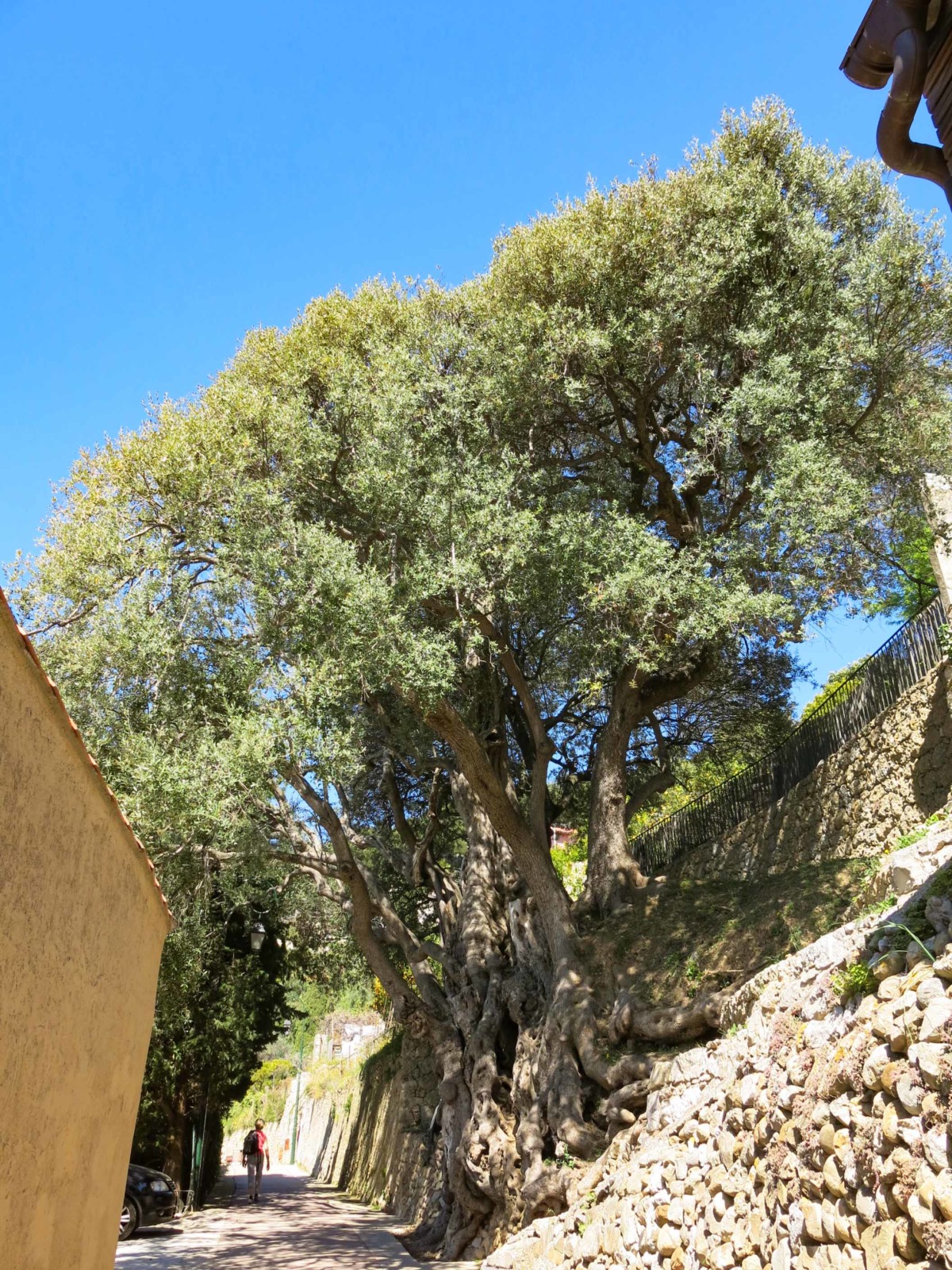
The thousand-year-old olive tree is located east of the hilltop village, on the road to Menton that leads to the Saint-Roch chapel.
Cap Martin peninsula

The luxurious villas of Cap Martin
To the southeast of the perched village is the wooded peninsula of Cap Martin, covered with opulent Belle Époque villas.
You will see some of these villas as you walk along the coastal path:
- E-1027 by the Irish architect Eileen Gray (1924)
- Villa Torre Clementina (1904)
- Villa Cyrnos, built for the former Empress Eugenie (1892)
- Cypris Villa (1904)
- and Villa Aréthuse-Trianon (1893), which evokes the Petit Trianon of Versailles


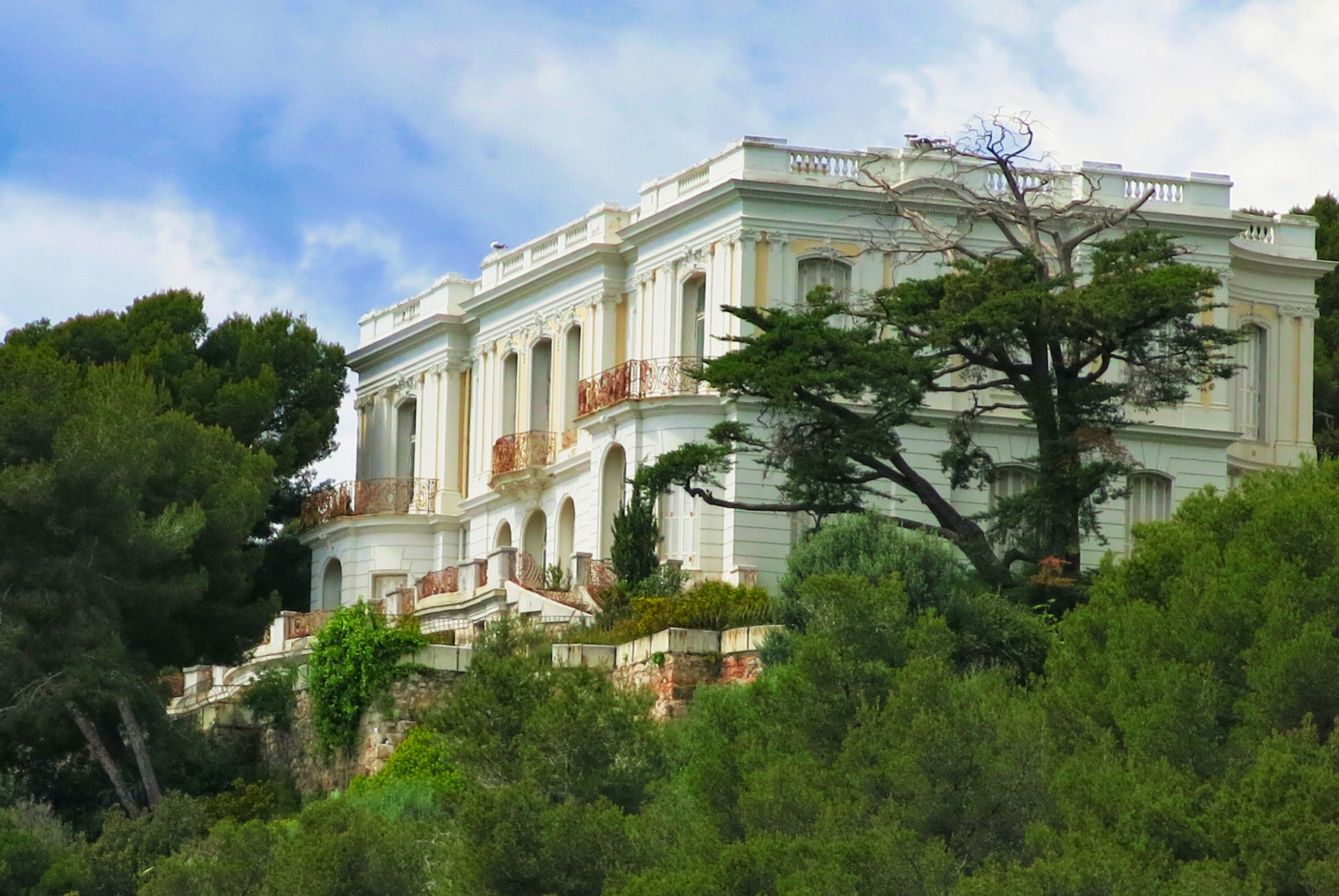
The coastal path of Le Corbusier
The azure waters of Roquebrune-Cap-Martin are the backdrop for beautiful walks along the coastal path.

The Promenade Le Corbusier follows Cap Martin’s contours, from Monaco’s buildings to the Grand Hotel du Cap.
The path is 7 km long and runs through secluded beaches, banks of mimosa and wind-bent pines.
Le Chemin des Douaniers
The customs administration laid a path along the Mediterranean coastline during the French Revolution.
In 1791, the “Chemin des douaniers” became operational between Les Saintes Maries de la Mer and Menton.
Since then, the path has become a pedestrian area along the Cap Martin coastline.
Many personalities have walked along it: emperors and empresses, smugglers, and, nowadays, families and other sportsmen.

A walk along the coastal path
The Chemin des Douaniers allows you to follow the coast from Monaco to the tip of Cap Martin between the rocks eroded by the waves and the beautiful and luxurious properties.
![Cap Martin © avu-edm - licence [CC BY 3.0] from Wikimedia Commons](https://frenchmoments.eu/wp-content/uploads/2014/08/Cap-Martin-©-avu-edm-licence-CC-BY-3.0-from-Wikimedia-Commons.jpg)
Lush vegetation
One can admire splendid marine landscapes and particular vegetation.
Indeed, a mixture of endemic species and exotic plants was imported at the end of the 19th century for the gardens of the Cap Martin villas.
![Orange tree in Cap Martin © Tangopaso - licence [CC BY-SA 3.0] from Wikimedia Commons](https://frenchmoments.eu/wp-content/uploads/2014/08/Roquebrune-Cap-Martin-Orange-tree-©-Tangopaso-licence-CC-BY-SA-3.0-from-Wikimedia-Commons.jpg)
![Cap Martin Le Corbusier track © Renek78 - licence [CC BY-SA 4.0] from Wikimedia Commons](https://frenchmoments.eu/wp-content/uploads/2014/08/Cap-Martin-Le-Corbusier-track-©-Renek78-licence-CC-BY-SA-4.0-from-Wikimedia-Commons.jpg)
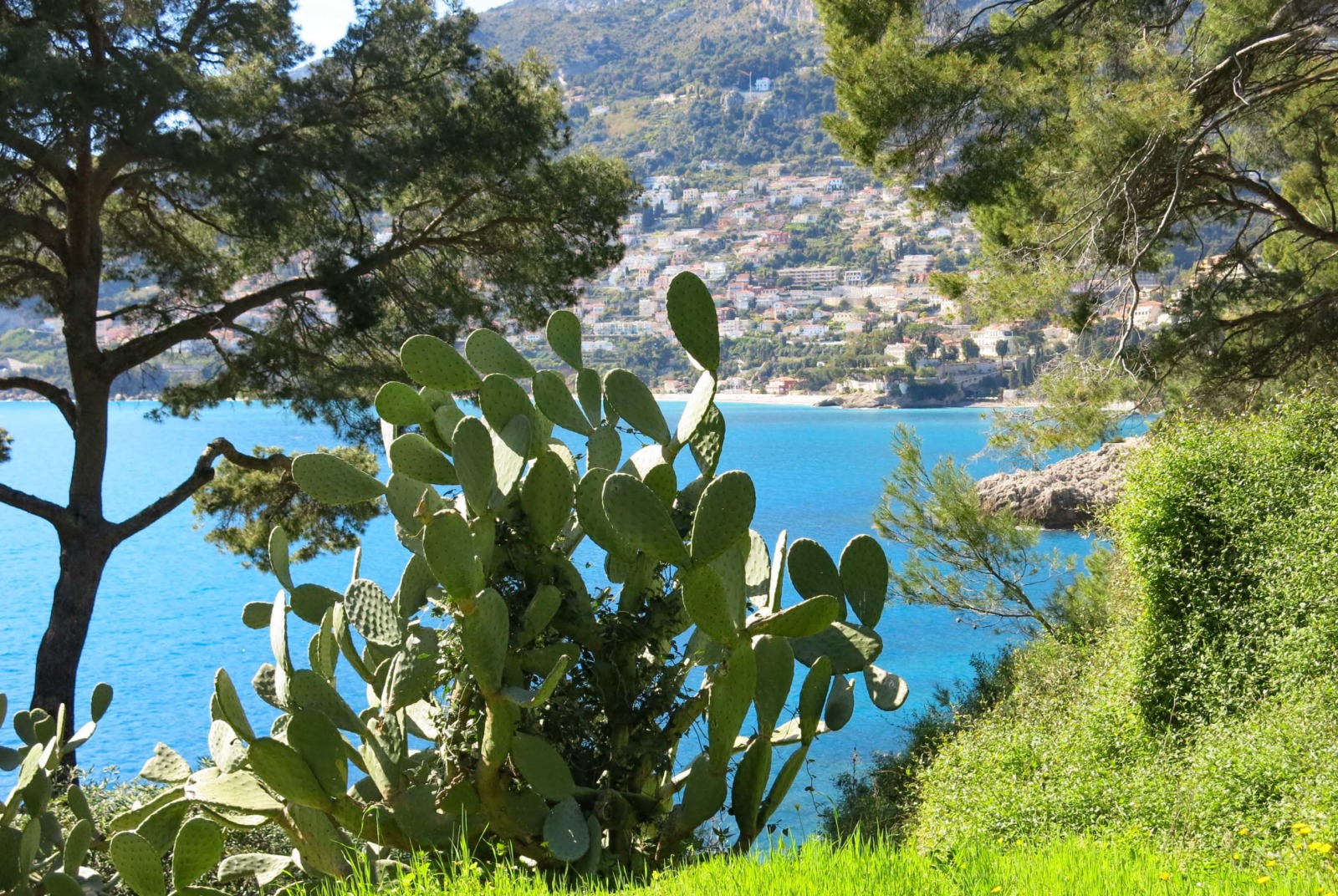

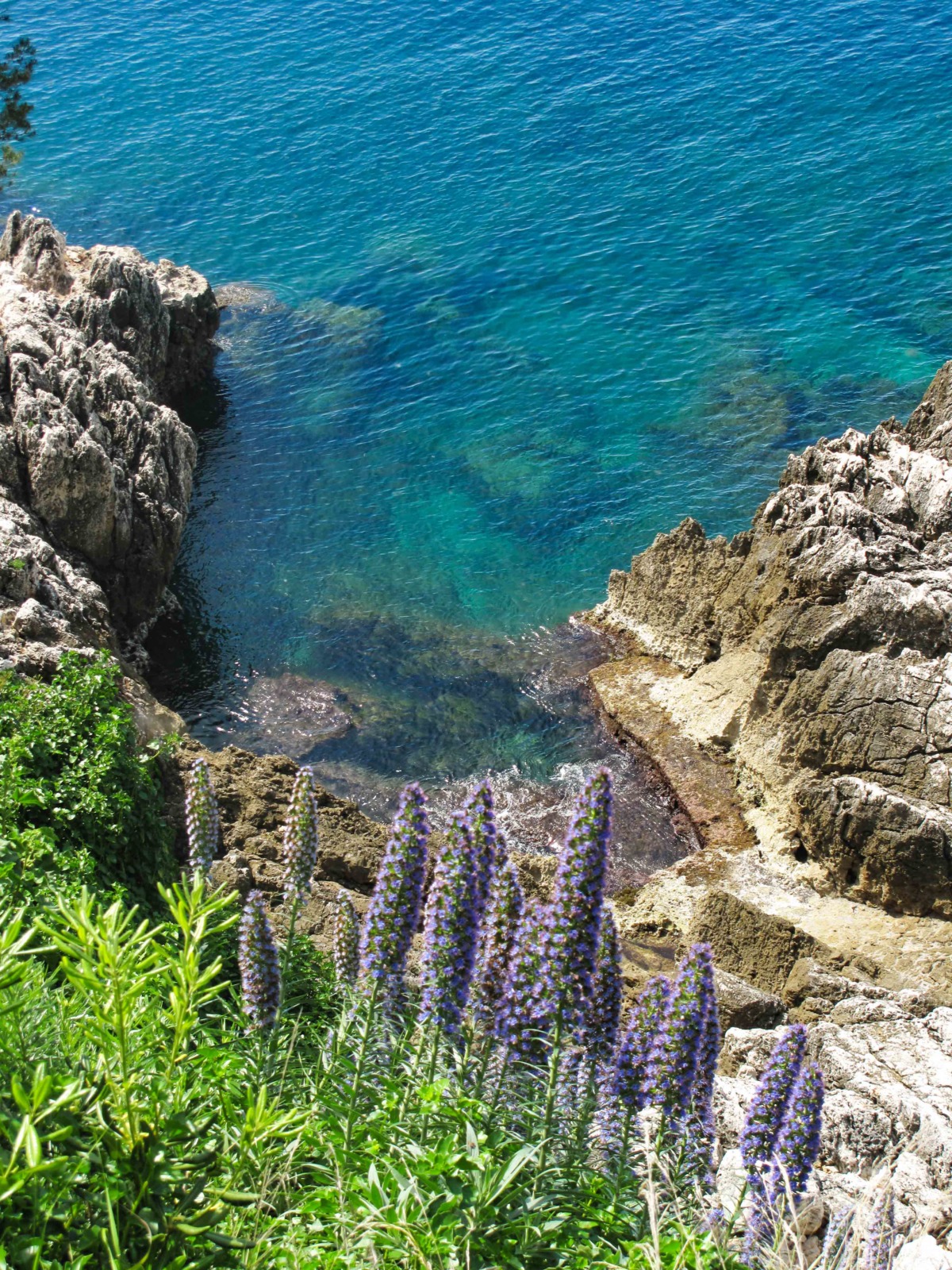
From Cabanons to villas and impressive footbridges
Along the path, you will discover the bust of the architect Le Corbusier and his famous cabanon, the villas of Cap Martin, including the curious villa E1027, the Grand Hôtel du Cap, the Buse beach and the Golfe Bleu beach where paragliders land.
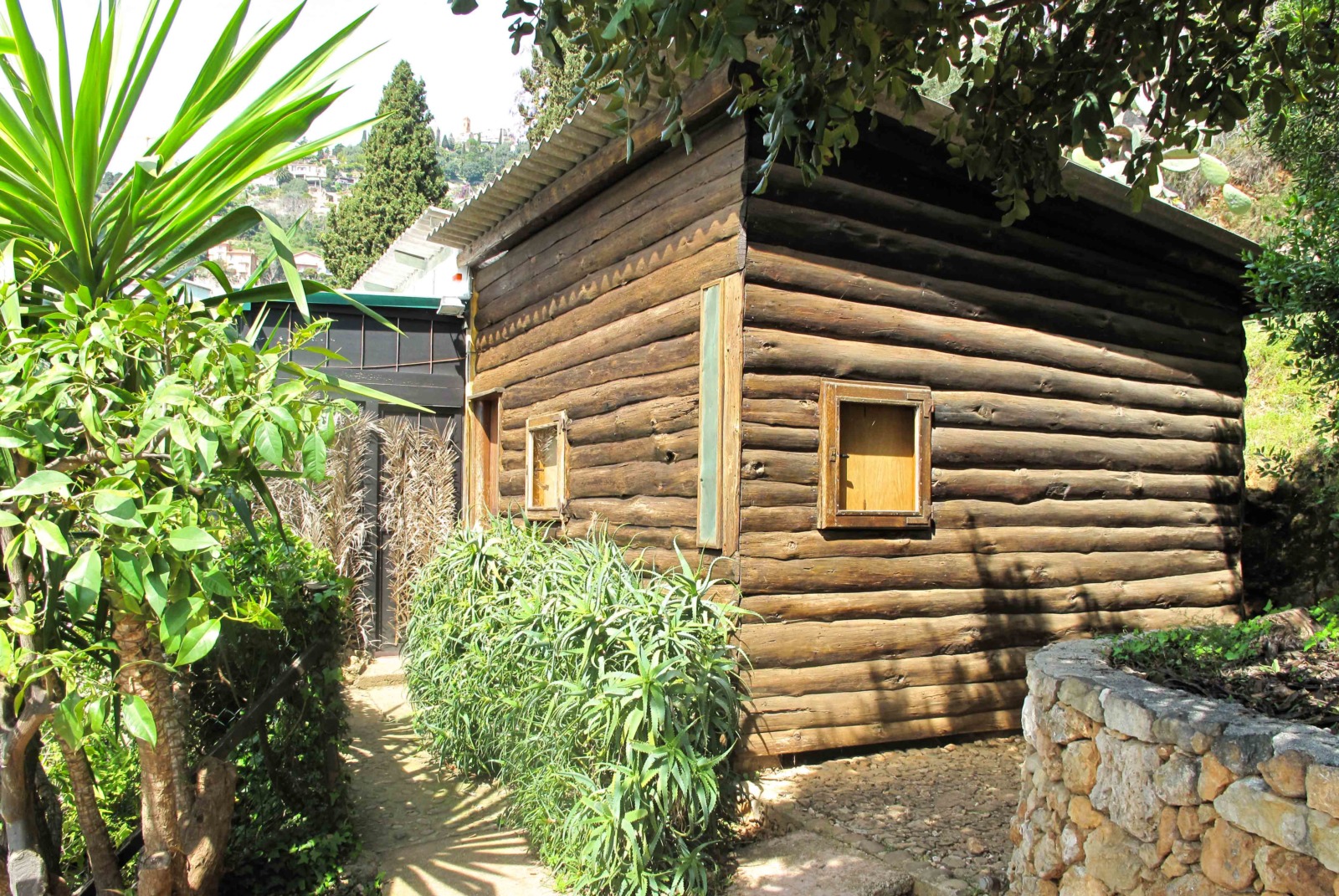
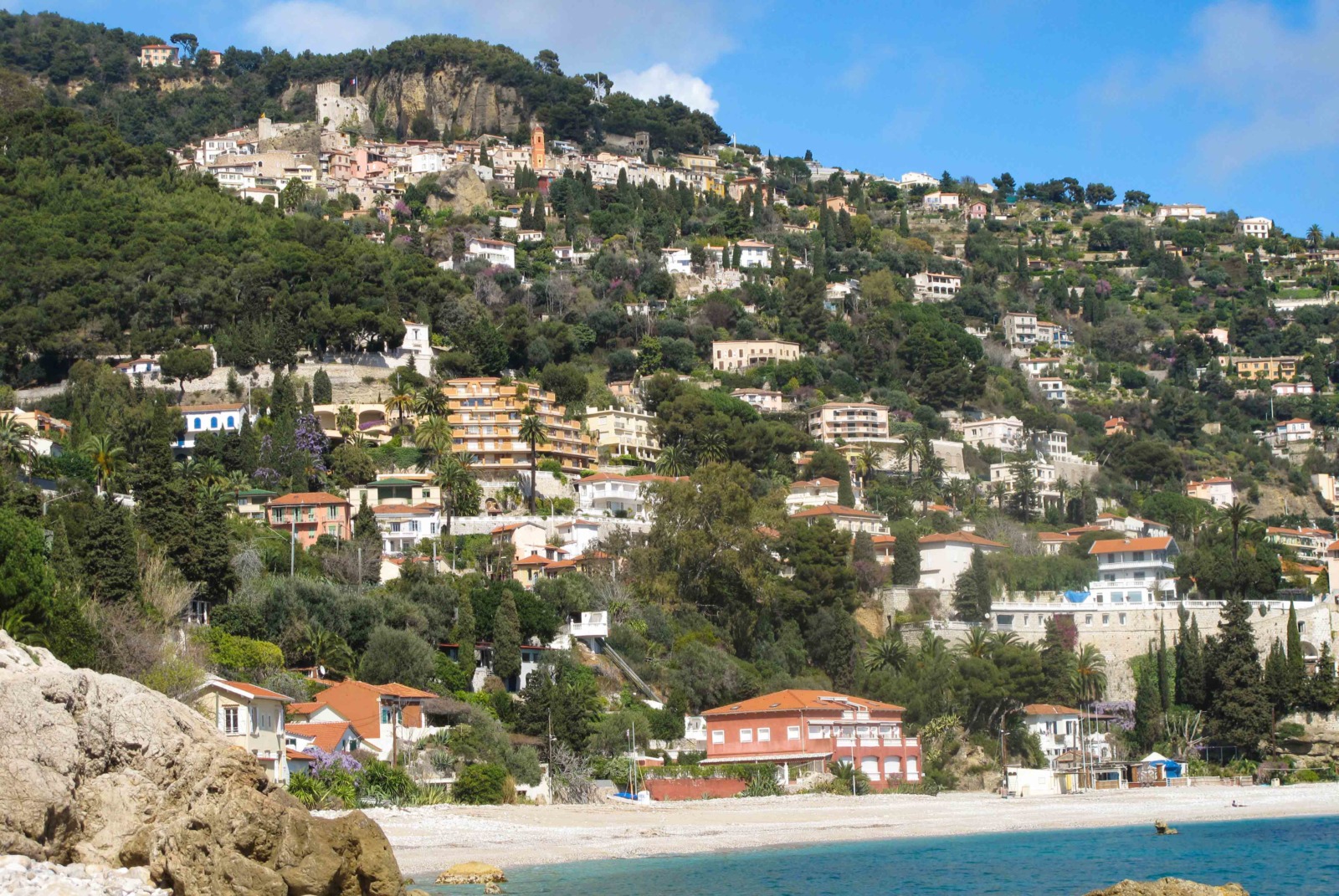
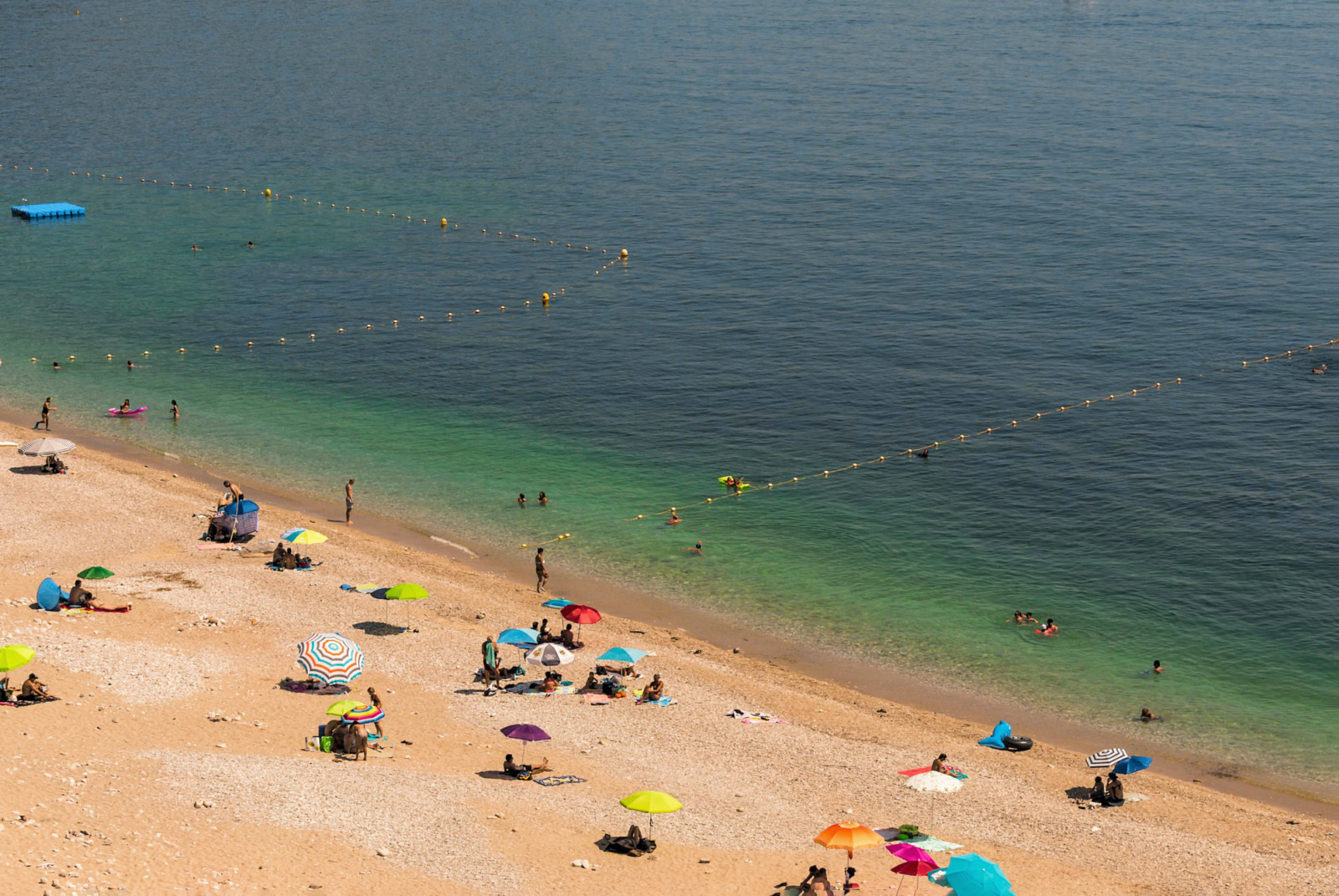
And then, this impressive footbridge is hung on the retaining wall of the railway.


Sometimes, you come across small stairs directly to the water’s edge.
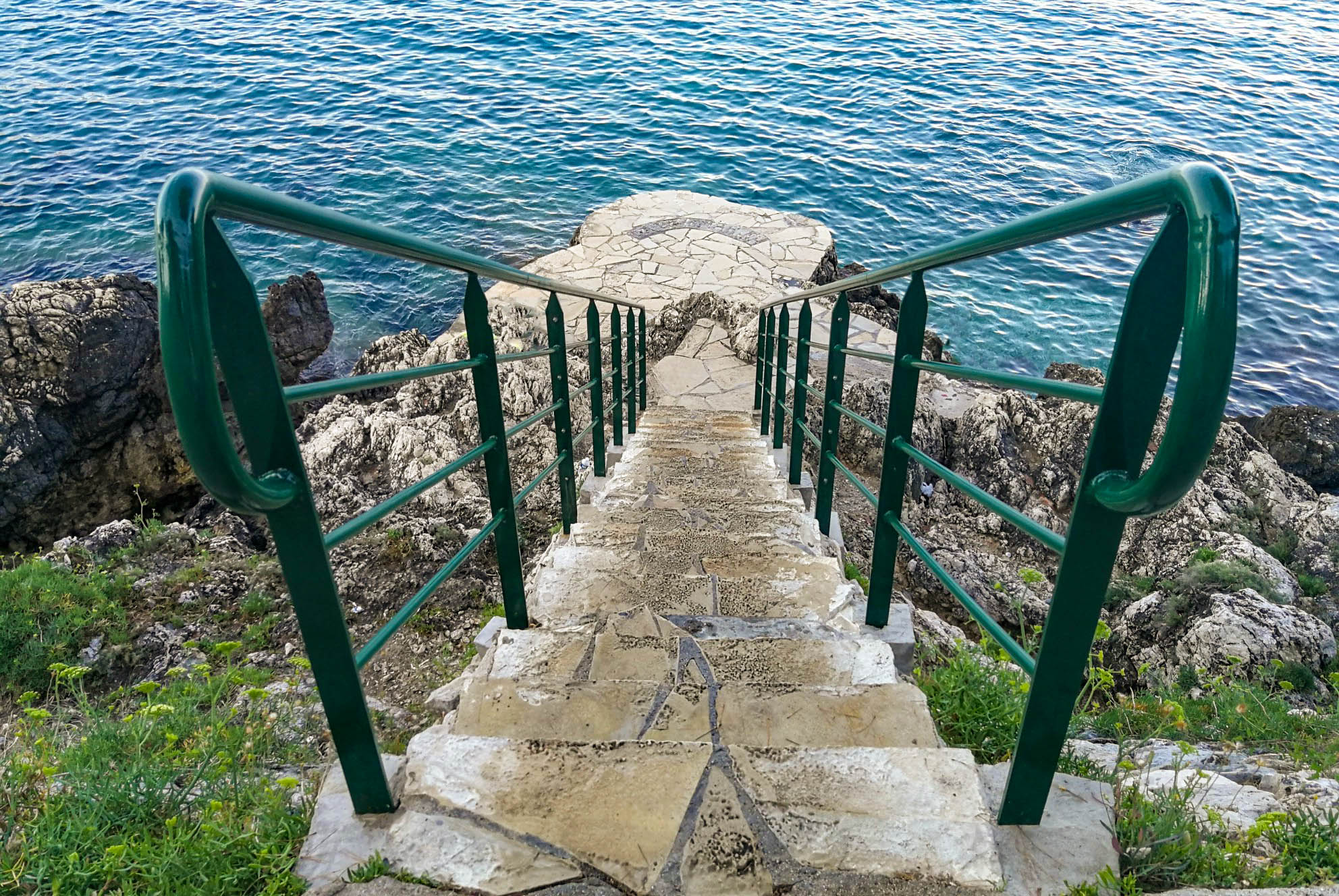
The coastal path Le Corbusier gets round the headland with stunning views of Monaco, Menton and the Italian Riviera.
![Menton old town from Cap Martin © avu-edm - licence [CC BY 3.0] from Wikimedia Commons](https://frenchmoments.eu/wp-content/uploads/2014/08/Menton-old-town-from-Cap-Martin-©-avu-edm-licence-CC-BY-3.0-from-Wikimedia-Commons.jpg)
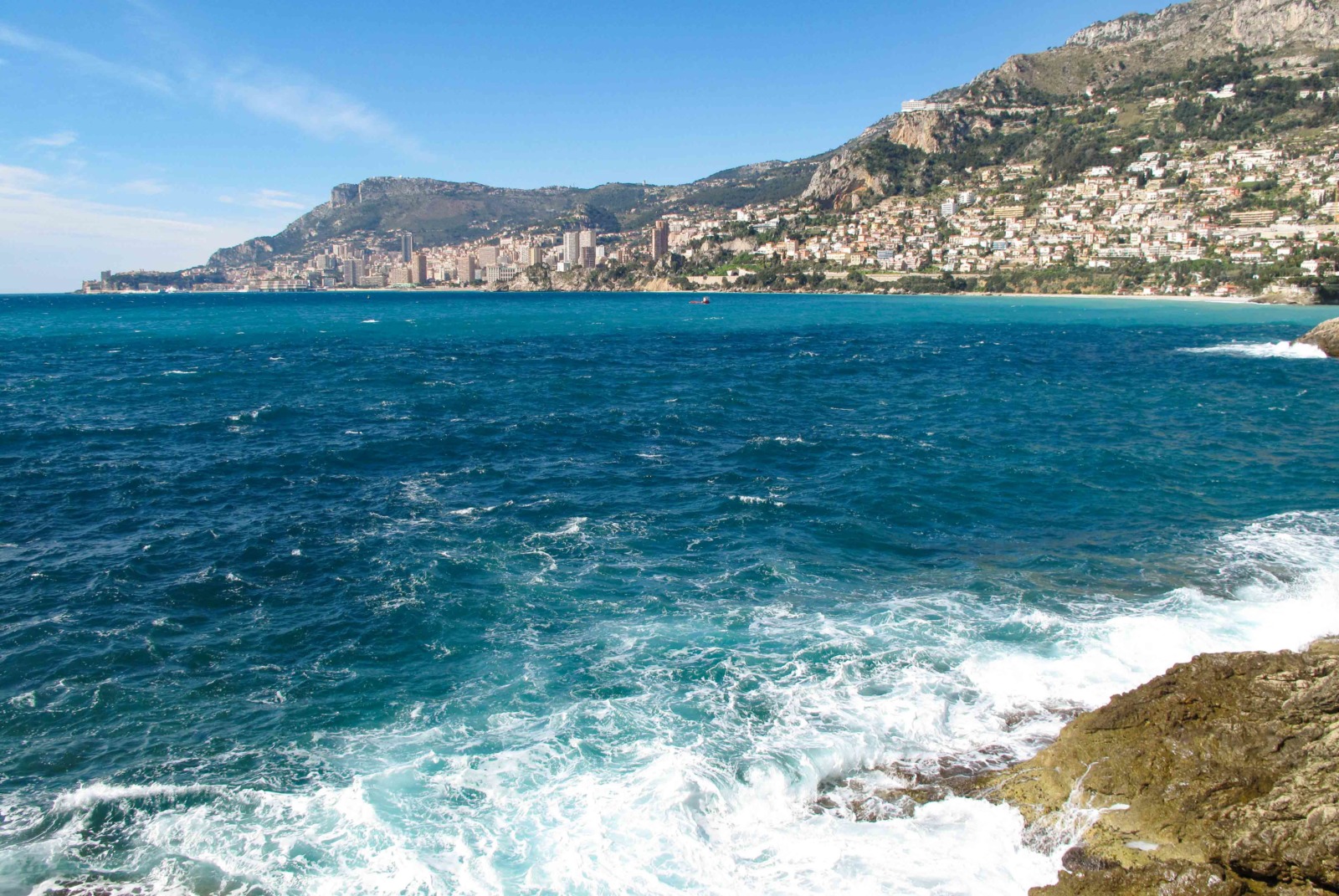
How to access the coastal path
There are several ways to access the customs path:
- the Pointe du Cap Martin (Avenue Winston Churchill),
- the Avenue Virginie Hériot (sentier de la Dragonnière),
- the Sentier Massolin,
- the Avenue de la Gare (Cabbé district),
- and the Avenue Princesse Grace at the border with the Principality of Monaco.
From Monaco to the Carnolès train station, you should allow half a day’s walk… or even longer to enjoy the beautiful scenery that awaits you!
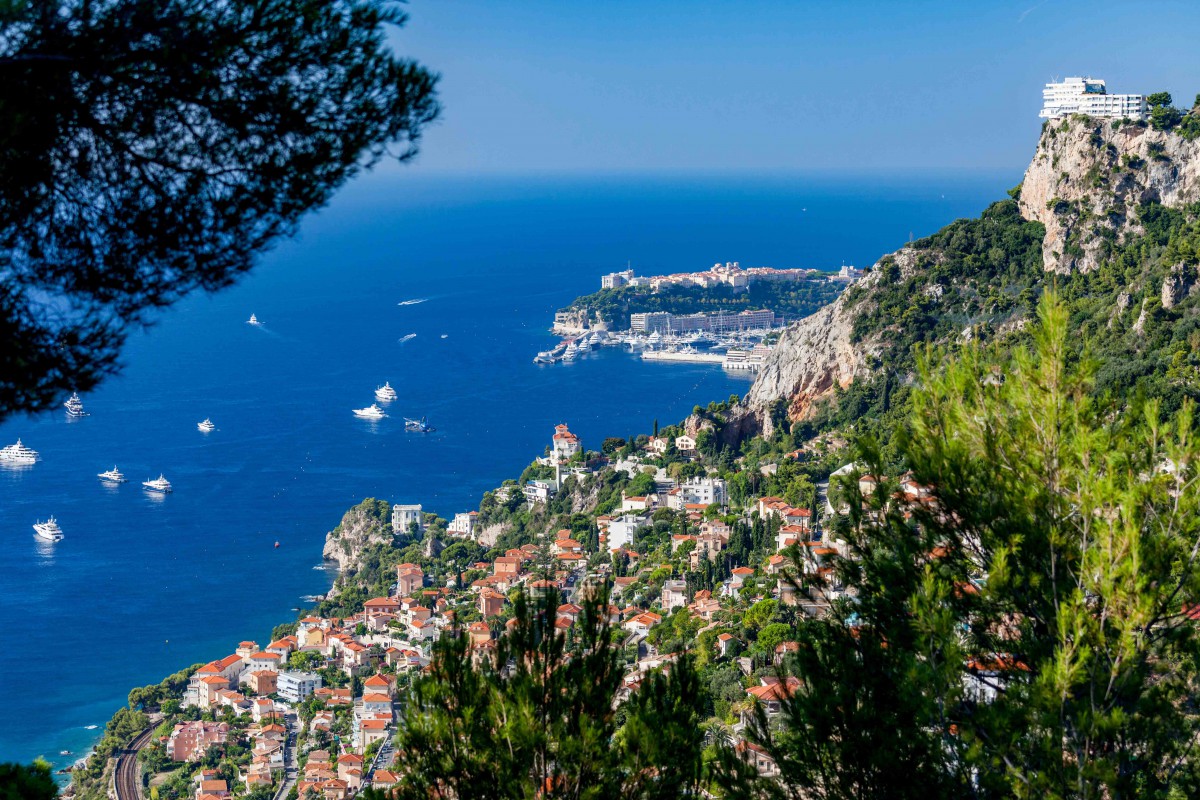
The Villa Lumone Mausoleum
Today, the monument is strangely located in the middle of a dense residential area north of Cape Martin.
The Lumone Mausoleum is a Roman funerary monument that was probably built in the 1st century AD on the ancient Via Julia Augusta.

This prestigious funerary monument illustrates the relationship between the city of the dead and the roads.
The monument was intended for a person of some importance.
Its façade has three niches, and the two floors belong to a funerary enclosure, two sides of which remain visible.
The enclosure was the boundary of a plot, which was probably accessed from the rear.
The central frame of the upper level was decorated with an object applied to the masonry, probably an inscription commemorating the deceased’s name and titles.
The decoration and form are of a rare type known only in Ostia (Italy) in the first century.
The Olive Tree Park
At the heart of the Cap Martin plateau is a magnificent public park.
On the east side, the park of Cap Martin is symmetrical and tamed, like a French garden.
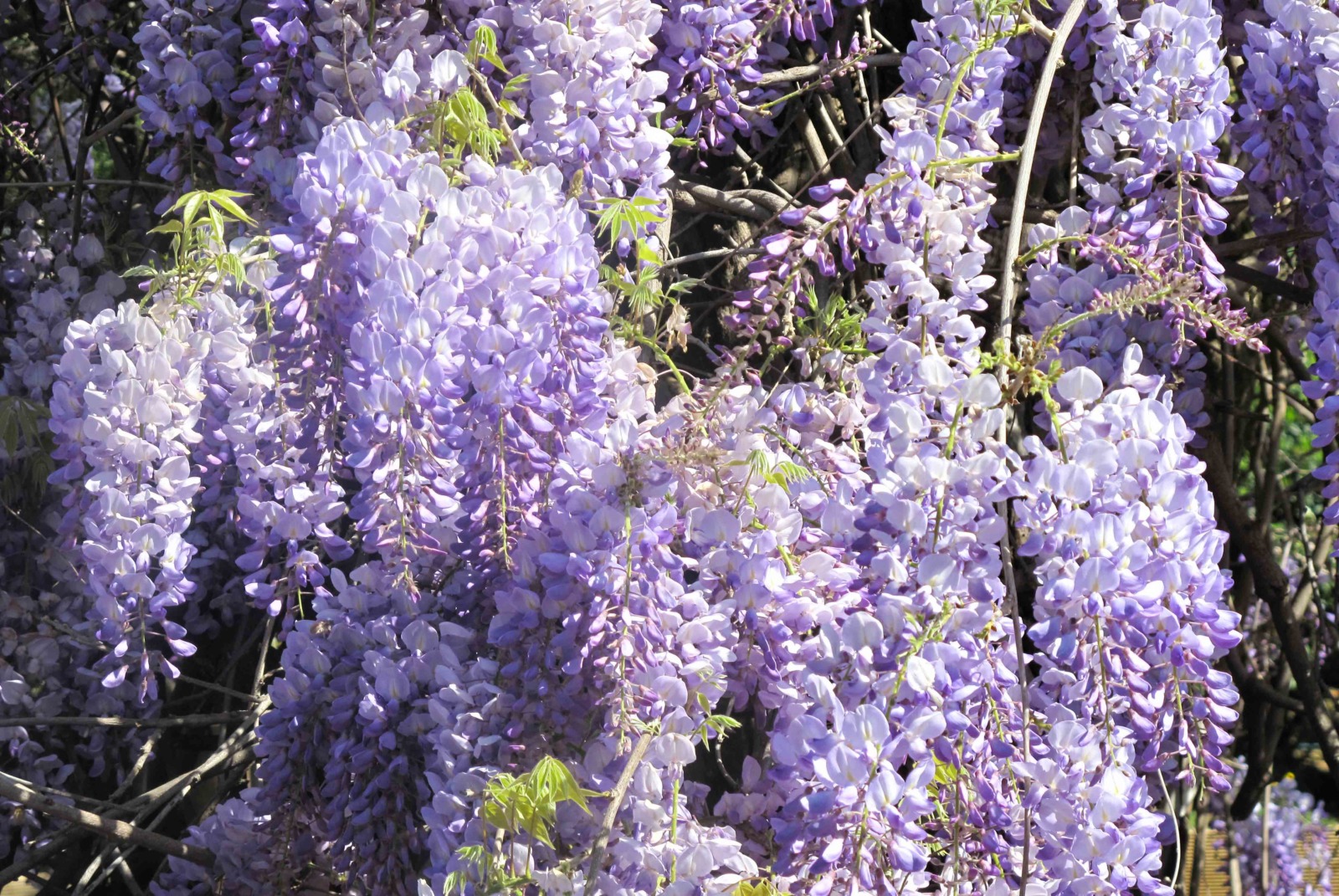
The western part, more natural, contains olive trees that are several hundred years old.
This is the magnificent Parc des Oliviers (Olive Tree Park), which the former owners donated to the municipality.

The garden is also home to several contemporary sculptures and the celebrity alley.
There are busts of personalities who have stayed in Roquebrune Cap Martin.
Finally, there is an area with games for children and a refreshment bar.
- Main entrance: Avenue Paul-Doumer
- Secondary entrance: Avenue Virginie-Hériot
- Open every day from 9 am to 5 pm (from June to October, closing at 7 pm)
Find out more!
- Our Discovery Guide to the French Riviera
- Discover Menton, the Pearl of France
- Have a stroll in the Parks and Gardens of Menton
- All there is to know about the Principality of Monaco
- Follow the Corniche Roads of the Riviera from Nice to Menton
- The Wikipedia article on Roquebrune-Cap-Martin
- The Tourist Office Board of Provence-Alpes-Côte d’Azur
- Visit the official website of Menton’s Tourist Board
Have you been to Roquebrune-Cap-Martin? If so, what is your favourite place? Leave me a comment just below!

Pin on Pinterest!
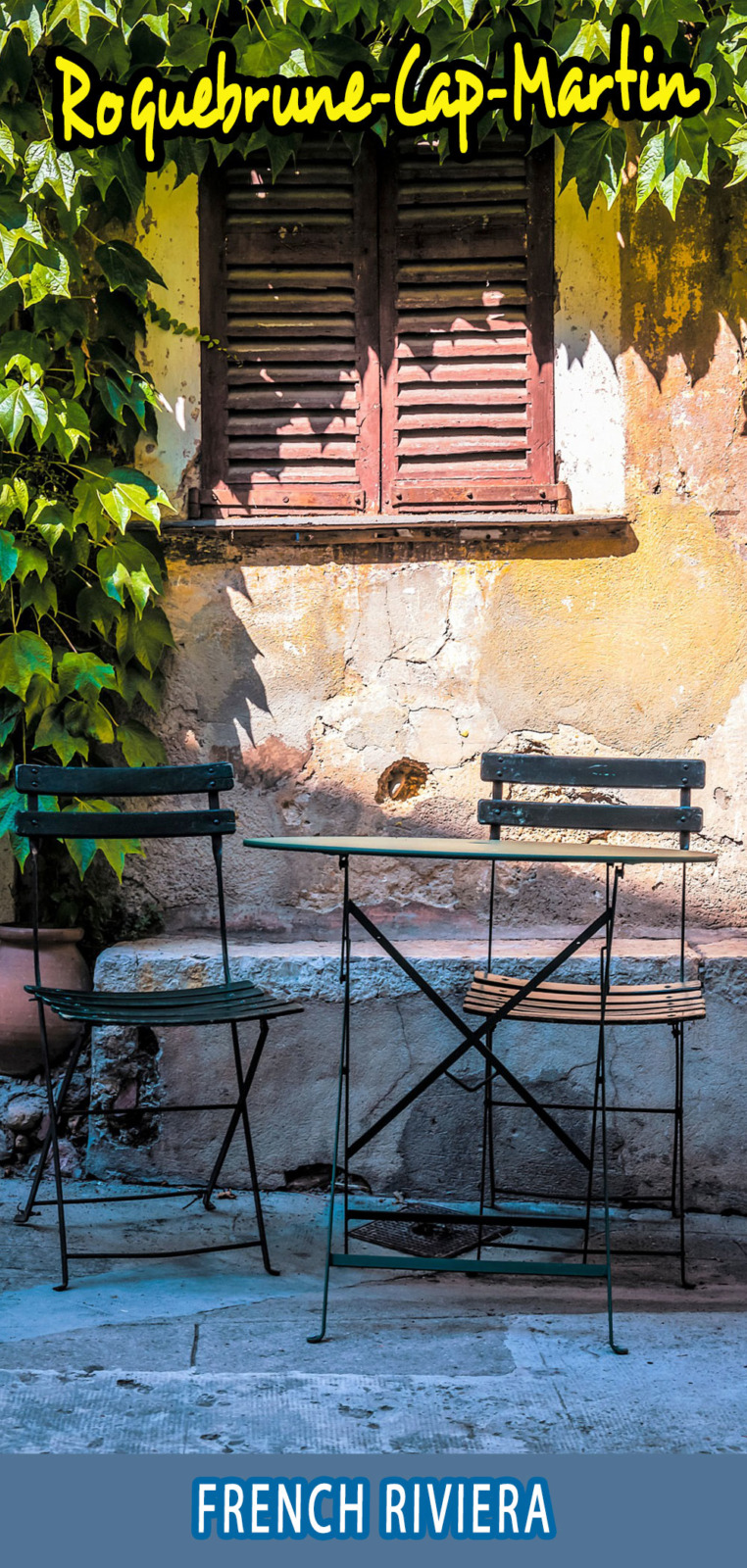

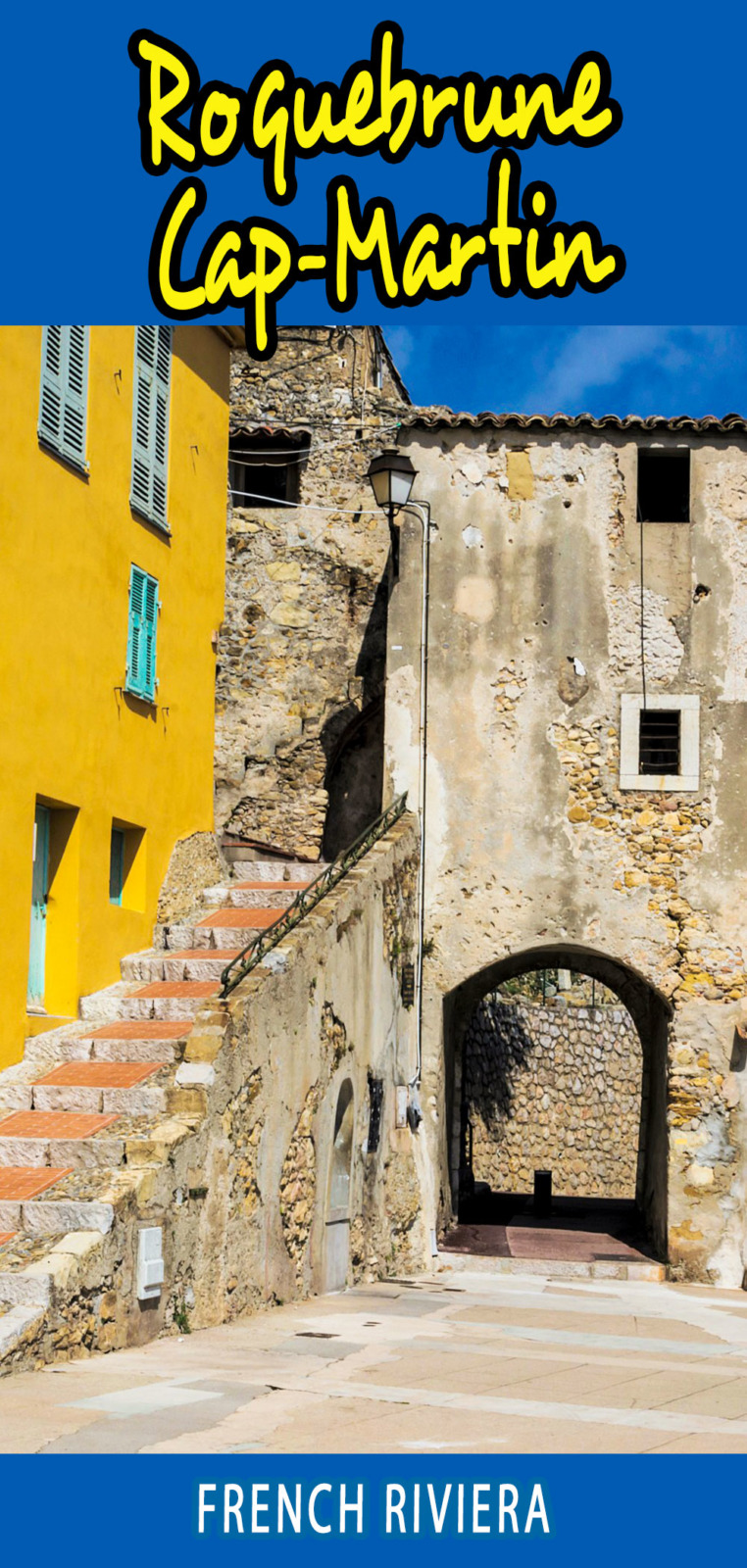
English-French Vocabulary
(f) for féminin, (m) for masculin, (adj) for adjective and (v) for verbs
- beach = plage (f)
- border = frontière (f)
- cape = cap (m)
- castle = château (m)
- French Riviera = Côte d’Azur (f)
- Genoa = Gênes
- House of Savoy = Maison de Savoie (f)
- Italy = Italie (f)
- keep = donjon (m)
- Mediterranean Sea = Mer Méditerranée (f)
- olive tree = olivier (m)
- peninsula = péninsule (f)
- perched village = village perché (m)
- railway = chemin de fer (m)
- seafront = bord de mer (m)
- sun = soleil (m)
- Ventimiglia = Vintimille
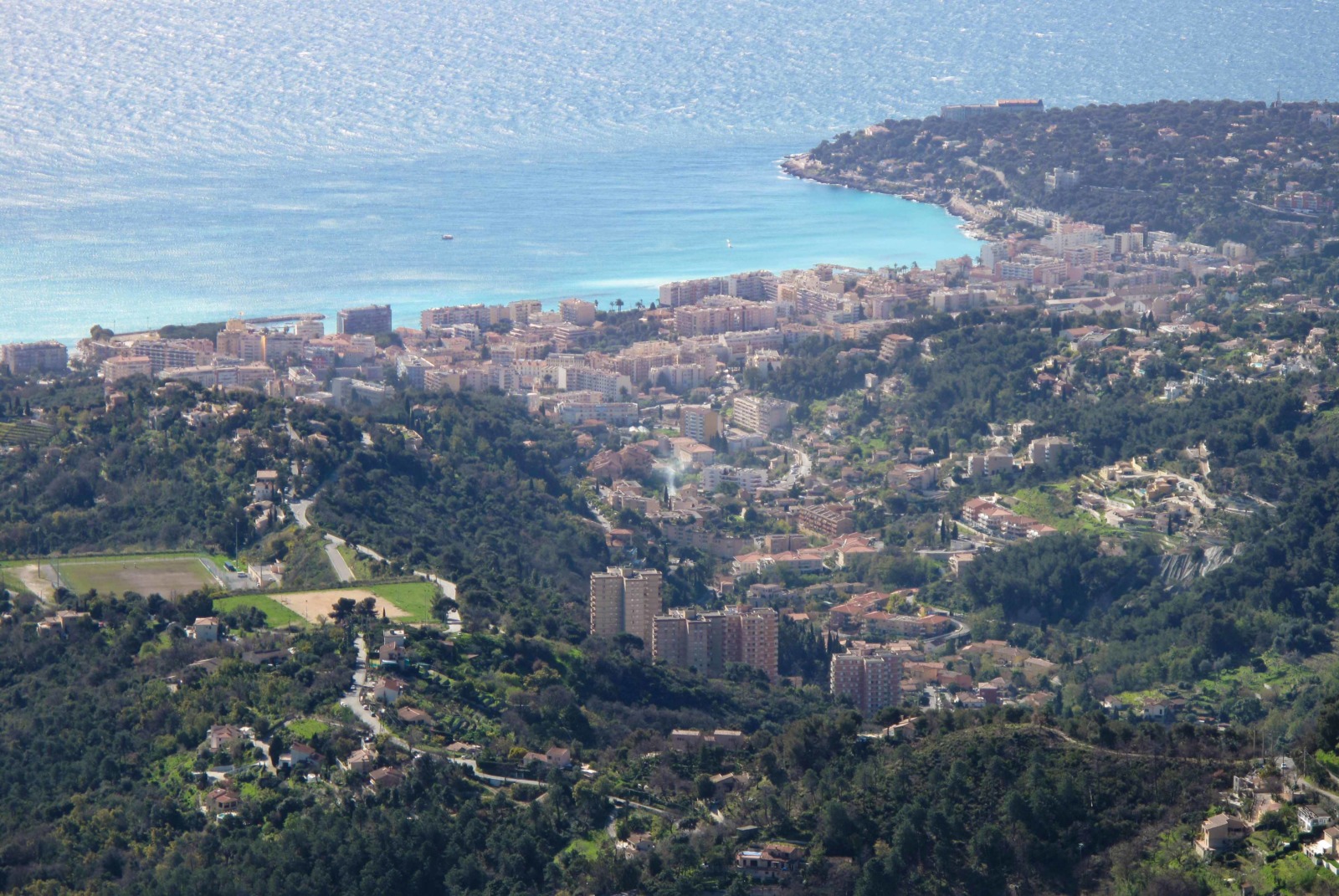
Featured image: Roquebrune by Xilow (Public Domain via Wikimedia Commons)




Our oral family history includes mention of nobility from Roque Brune that came to Canada and settled here. But records are very incomplete. Do you know of any way way to access birth or census records from the 1700-1800's for that area?
Hello Rick, there is a useful website that can help you (but it’s all in French) > https://francearchives.fr/fr/article/26287743 Maybe use Google Translate to make good use of it! Hope this helps! 🙂
Ah…I can’t believe you mentioned Churchill’s staying at La Pausa and didn’t mention that it was the Villa owned and designed by an architect for Coco Chanel….
Hi Pierre, I visited R-C-M in 2018. I had a friend that lived in Monaco, and annother friend from Italy so we found a lovely spacious airbnb apt. to share with sea view that also overlooked the clay tennis courts, AND off street garage parking too! I’ll bet you know exactly which building I mean. My friend from Monaco took us around easily on foot and bus, which is free btw, my friend from Italy had a small car and took us across the border to Italy for a day trip to a charming village called Dolceacqua that had an amazing open market.
Wow! It must have been a magnificent and memorable holiday!